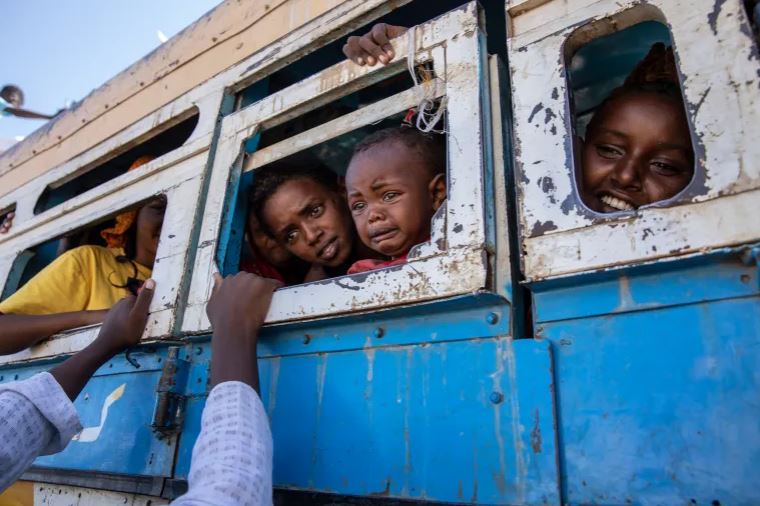GP Short Notes # 657, 1 September 2022
 Anu Maria Joseph
Anu Maria Joseph Ethiopia: Renewed fighting in Tigray, ending five months of ceasefire
In the news
On 24 August, fighting between Tigray rebels and Ethiopian federal forces erupted around the town of Kobo, ending a months-long ceasefire. The rebel group, the TPLF, accused the government forces and their allies of launching a “large scale” offensive toward southern Tigray. A TPLF spokesperson said: “…they (the government forces) launched the offensive early this morning around 5 am local time. We are defending our positions.” Whereas the government accused the TPLF of striking first. The Government Communication Service said in a statement: “…ignoring all of the peace alternatives presented by the government, the terrorist group TPLF armed group continued its recent provocations and launched an attack this morning at 5 am (00200 GMT).”
On 29 August, BBC reported, that the Tigrayan forces seized the Amhara town of Kobo on 27 August after pushing southwards near the border. UN chief Antonio Guterres said he was “deeply shocked” by the renewed fighting and called for an “immediate cessation of hostilities and for the resumption of peace talks.” The head of the African Union Commission, Moussa Faki Mahamat, appealed for a “de-escalation” and restoring “talks to seek a peaceful solution.” A US State Department spokesperson said that the US has urged both sides “to redouble efforts to advance talks to achieve a durable ceasefire.”
Issues at large
First, the failing ceasefire and peace process. In March, the Ethiopian government declared a unilateral humanitarian truce which eased the fighting. In June, the Ethiopian government called for a formal Tigray ceasefire agreement for the resumption of basic services reaching war-torn areas. However, the government wanted the African Union envoy to lead the peace talks, but the TPLF preferred former Kenyan president Uhuru Kenyatta as a mediator, which ended in no further developments. The new fight erupted and resumed hostilities, torpedoing a five-month ceasefire and peace efforts.
Second, a brief background to the conflict in Tigray. The roots of the conflict can be traced to September 2020, when the federal government postponed the elections, in which the Tigray leaders saw Prime Minister Abiy Ahmed’s attempt to centralize power and destroy Ethiopia’s federal system. In September, TPLF defied the central government to hold its own regional elections. In October, the rift grew after Abiy’s government suspended funding and cut ties with Tigray. In November, the central government launched a military offensive under “law enforcement operations” after the authorities accused Tigray forces of attacking a military camp and attempting to loot military assets. Eventually, the tensions evolved into a full-fledged conflict, spreading to neighbouring regions of Amhara, Oromo and Afar. Thousands were killed, nearly two million fled their homes, and seven million were facing “famine like conditions.”
Third, major actors. The Tigray people’s Liberation Front (TPLF) was a dominant force in the Ethiopian coalition government until 2018, though Tigrayans constituted only six per cent of the total population. The discontent among the majority ethnic groups, the Oromo and Amhara, led to a popular uprising and the elevation of an Oromia leader, Abiy Ahmed, who is the founder of the prosperity party. Prime Minister Abiy Ahmed, a Nobel Peace Prize winner failed in handling the Tigray rebels. Further, his regime launched a full-scale attack on Tigray and committed human rights atrocities on the Tigray people. Abiy and his policies gradually lost support from his own community leading to an alliance between TPLF and Oromo Liberation Army. The Ethiopian defence forces, Amhara Special Forces and allied militia on one side and the TPLF and Oromo Liberation Army on the other side engaged in the conflict. Also fighting on the government side were troops from Eritrea, whose leader Isaias Afwerki is close to Abiy Ahmed and a sworn enemy to TPLF.
In perspective
First, the Tigray rebels and the government forces have been continuously in talk fights and blamed each other for instigating the conflict. This led to a lack of progress toward peace negotiations and a volatile truce finally led to the resumption of fighting.
Second, the UN World Food Programme said the previous week that about half the population of Tigray suffered from lack of food and rate of malnutrition “skyrocketed”. As the humanitarian truce appears to be at an end, the relapse into fighting is likely to have a severe impact on the humanitarian situation and the reach of aid in Tigray.
Third, a joint mediation under multiple external actors including African Union, Kenya’s government, the UN and other international bodies and powers, is important to discuss their disagreements and avoid talk fights.